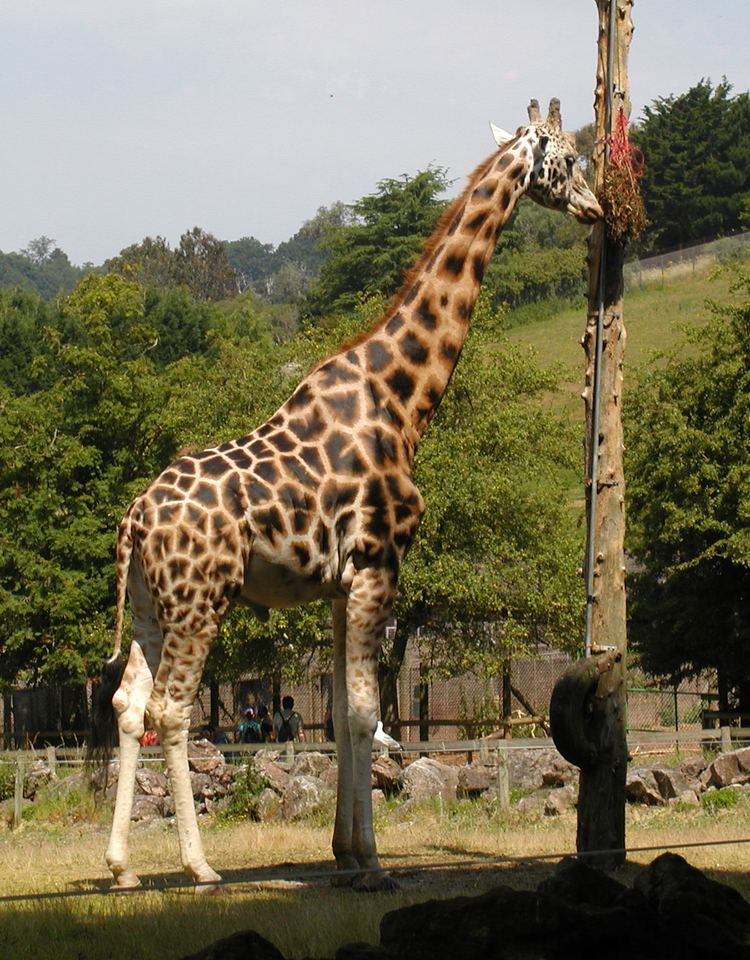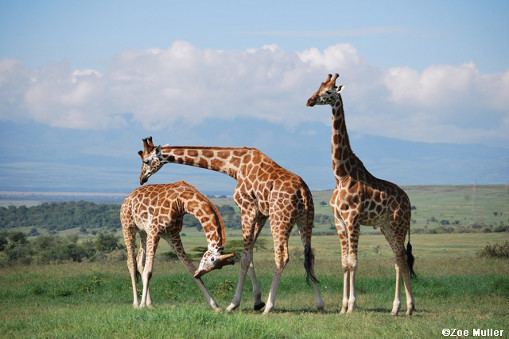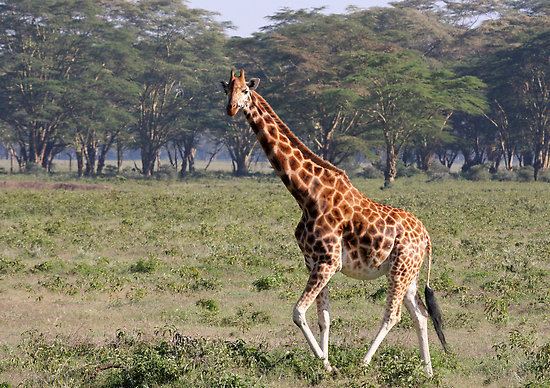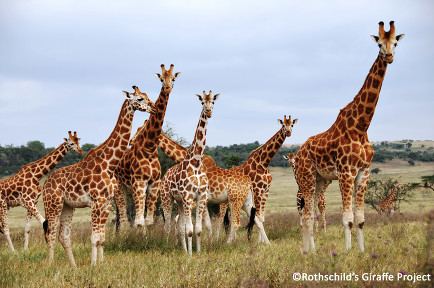Order Artiodactyla Genus Giraffa Rank Subspecies | Phylum Chordata Higher classification Giraffe | |
 | ||
Scientific name Giraffa camelopardalis rothschildi Similar Giraffe, Reticulated giraffe, Masai giraffe, Mammal, West African giraffe | ||
The Rothschild's giraffe (Giraffa camelopardalis camelopardalis, formerly Giraffa camelopardalis rothschildi) was formerly considered a subspecies of a singular Giraffa species, but due to genetic analysis circa 2016, has now been determined to be a conspecific ecotype of the Nubian giraffe (G.c. camelopardalis), a subspecies of the Northern giraffe. It is one of the most endangered distinct populations of giraffe, with 1500 individuals estimated in the wild.
Contents
- A rare rothschild s giraffe has been born at chester zoo
- Taxonomy and evolutionary history
- Characteristics
- Habitat and distribution
- Ecology and behavior
- Threats and conservation
- In captivity
- References

A rare rothschild s giraffe has been born at chester zoo
Taxonomy and evolutionary history

Giraffa camelopardalis rothschildi was named after the Tring Museum's founder, Walter Rothschild, and is also known as the Baringo giraffe, after the Lake Baringo area of Kenya, or as the Ugandan giraffe. All of those living in the wild are in protected areas in Kenya and Uganda. In 2007, Rothschild's giraffe was proposed as actually a separate species from other giraffe and not a giraffe subspecies. In 2016, a comprehensive analysis of all former giraffe subspecies concluded in the existence of four giraffe species, with the Rothschild's giraffe being deemed conspecific with the Nubian giraffe, which had never been analysed before. This resulted in both being composed as a single subspecies as the Nubian giraffe, in addition being added with the two other subspecies (the West African giraffe and the Kordofan giraffe) into the Northern giraffe species.
Characteristics

The Rothschild's giraffe is easily distinguishable from other species, subspecies and distinct populations such as the Rhodesian giraffe. The most obvious sign is in the colouring of the coat, or pelt. Whereas the Reticulated giraffe has very clearly defined dark patches with bright-whitish channels between them, Rothschild's giraffe more closely resembles the proper coating of Masai giraffe. However, when compared to the Masai giraffe, Rothschild's ecotype is paler, the orange-brown patches are less jagged and sharp in shape, and the connective channel is of a creamier hue compared to that seen on the reticulated giraffe. In addition, Rothschild's giraffe displays no markings on the lower leg, giving it the impression of wearing white stockings.

Another distinguishing feature of Rothschild's giraffe, although harder to spot, is the number of ossicones on the head. This is the only Giraffa phenotype to be born with five ossicones. Two of these are the larger and more obvious ones at the top of the head, which are common to all giraffes. The third ossicone can often be seen in the center of the giraffe's forehead, and the other two are behind each ear. They are also taller than many other populations, measuring up to 5.88 metres (19.3 feet) tall.

Males are larger than females and their two largest ossicones are usually bald from sparring. They usually tend to be darker in colour than the females, although this is not a guaranteed sexing indicator.
Habitat and distribution
Isolated populations of Rothschild's giraffes live in savannahs, grasslands and open woodlands of Uganda and Kenya. They are possibly regionally extinct from South Sudan and northeastern Democratic Republic of the Congo.
Ecology and behavior
Rothschild's giraffes mate at any time of the year and have a gestation period of 14 to 16 months, typically giving birth to a single calf. They live in small herds, with males and females (and their calves) living separately, only mixing for mating.
Threats and conservation
Giraffes in general are classified as vulnerable, and Rothschild's giraffe is at particular risk of hybridisation, as the population is so limited in numbers. Very few locations are left where Rothschild's giraffe can be seen in the wild, with notable spots being Lake Nakuru National Park in Kenya and Murchison Falls National Park in northern Uganda.
In captivity
Various captive breeding programmes are in place — notably at the Giraffe Centre in Nairobi, Kenya — which aim to expand the gene pool in the wild population of Rothschild's giraffe. As of January 2011, more than 450 are kept in ISIS (international species information system) registered zoos (which does not include the Nairobi Giraffe Centre), making both it and the reticulated giraffe the most commonly kept phenotypes of Giraffa.
